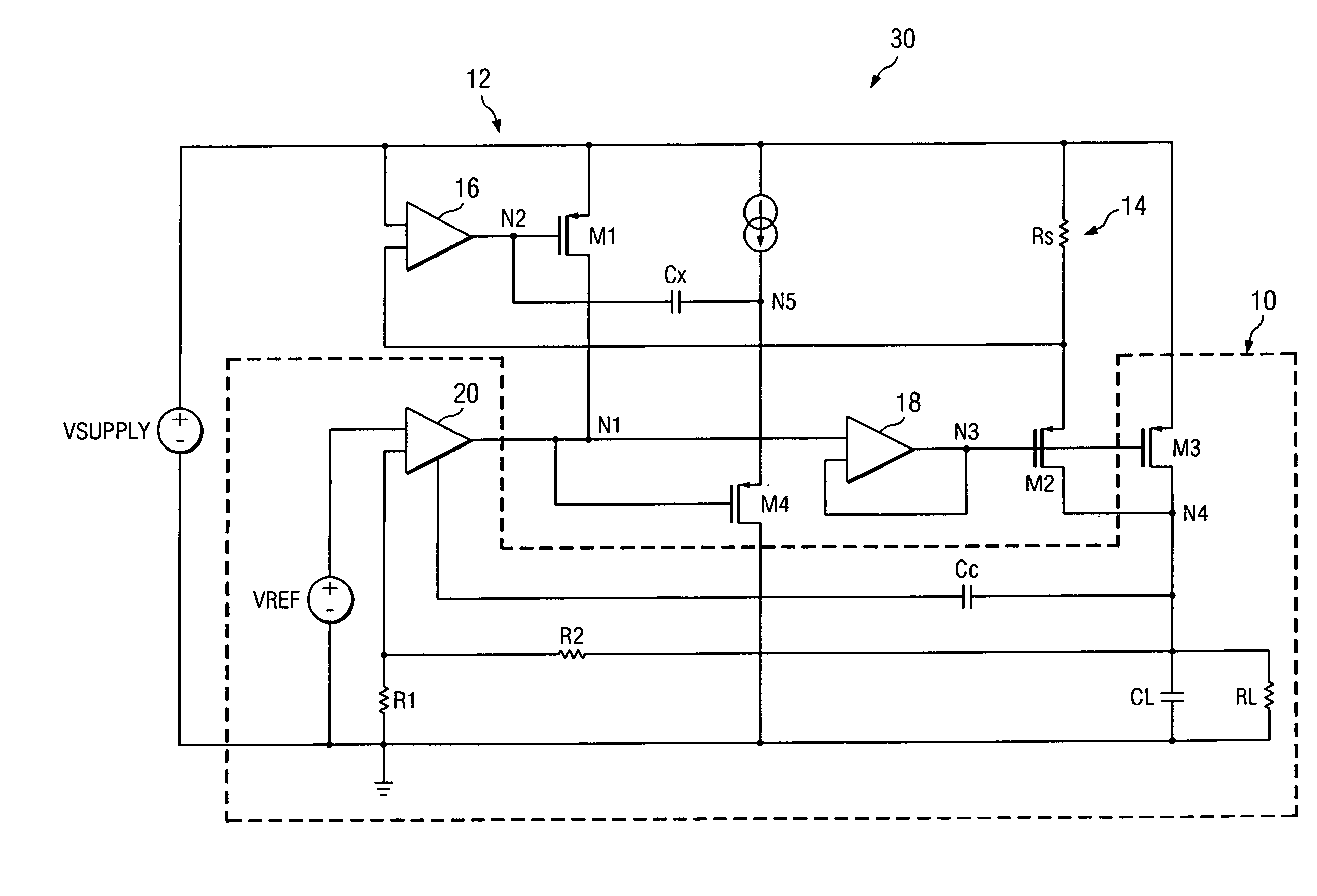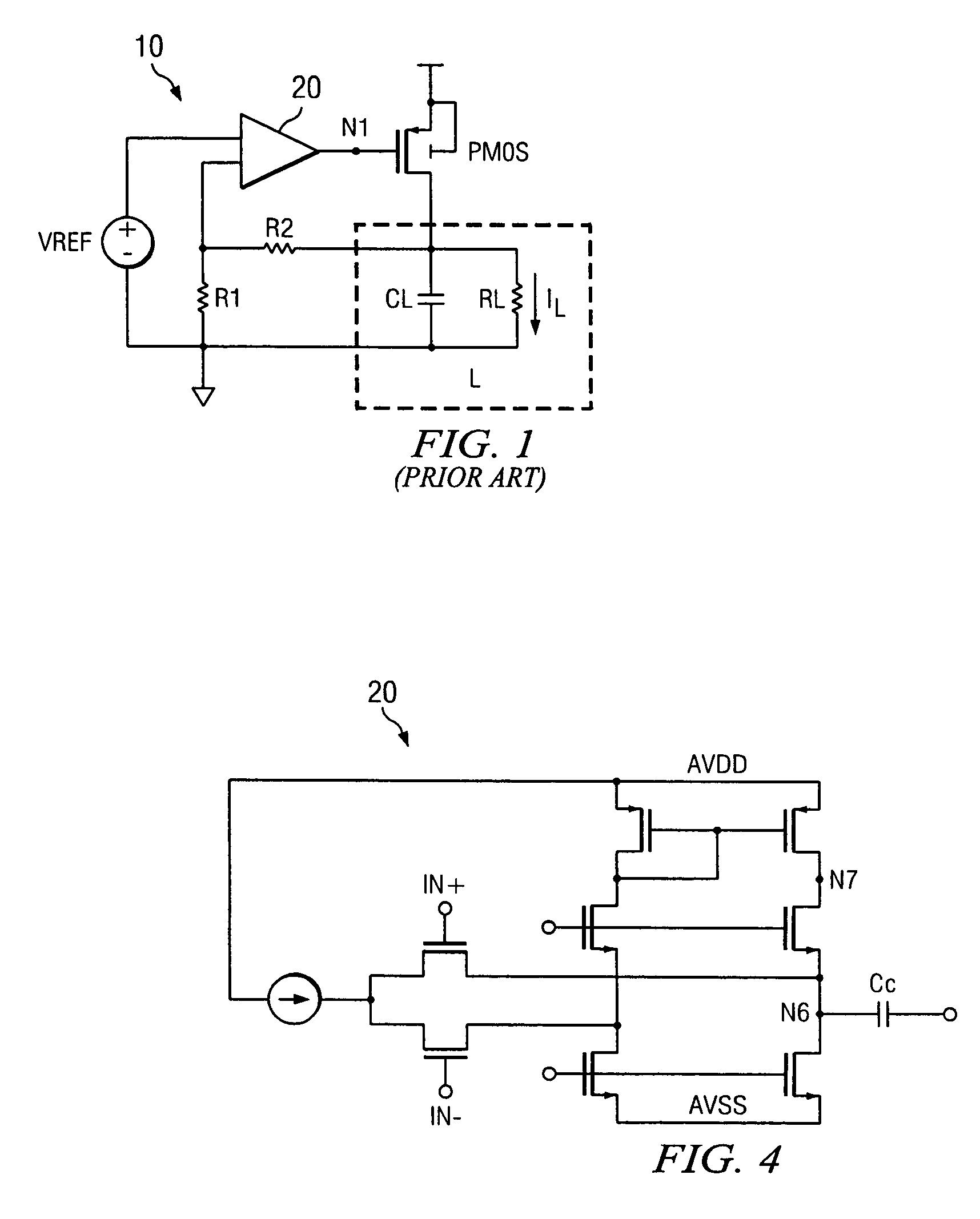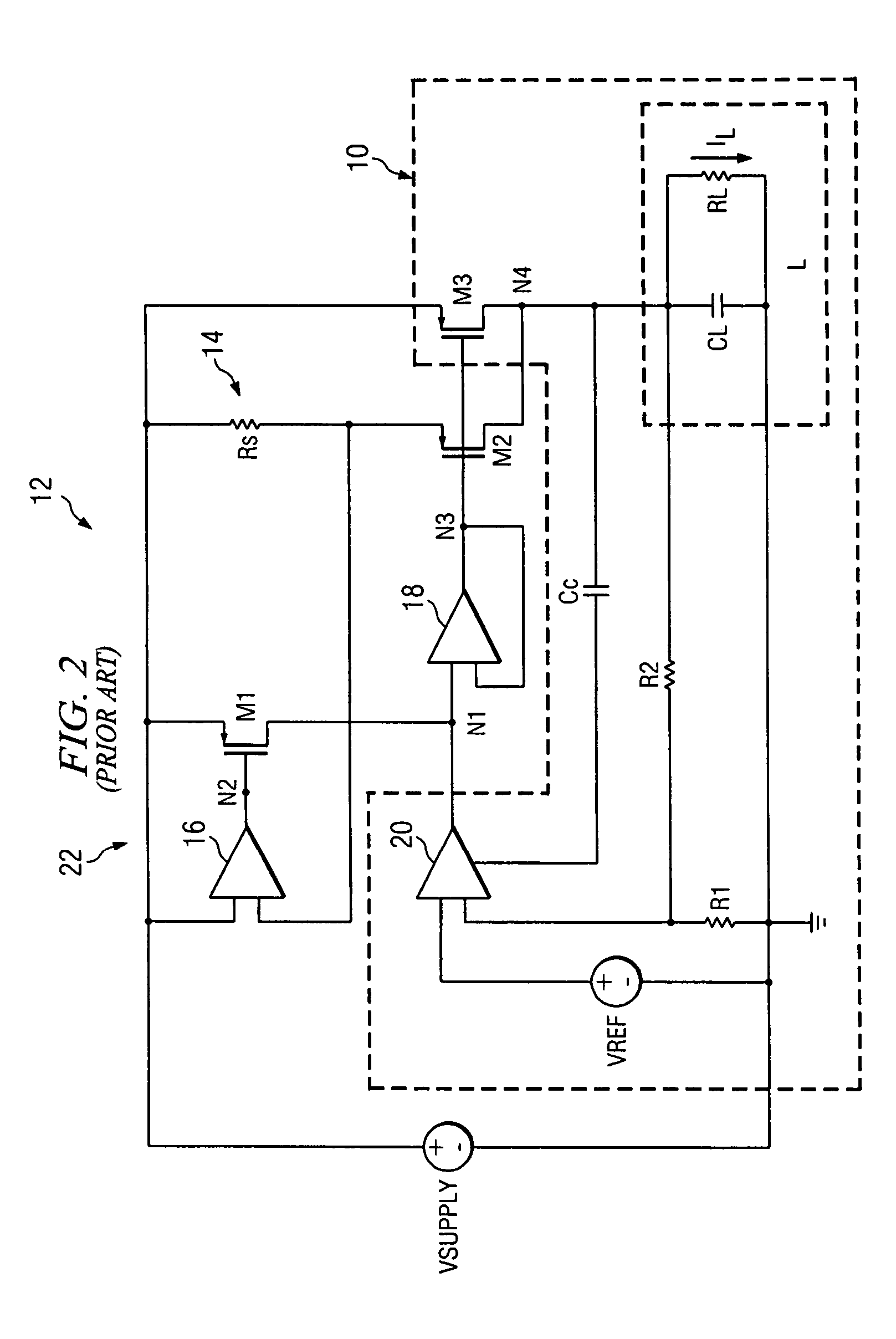Methods and systems for decoupling the stabilization of two loops
a loop and stabilization technology, applied in the field of electronic circuits, can solve problems such as conflicting loop stability requirements, difficult to achieve, and undesirable reduction of slew rate, so as to reduce the area of die, reduce the need for capacitance, and reduce the effect of cos
- Summary
- Abstract
- Description
- Claims
- Application Information
AI Technical Summary
Benefits of technology
Problems solved by technology
Method used
Image
Examples
Embodiment Construction
[0023]In general, the invention provides methods and circuits for decoupling the stability characteristics of loops within a circuit. Referring now primarily to FIG. 3, an overview of the methods and circuits of the invention is shown by this example of a schematic diagram of a circuit 30 wherein the stability characteristics of an LDO loop 10 and current limit loop 12 have been decoupled. Transistor M4 is shown coupled between the opamp 20 and buffer 18. The gate is connected to the output of the error amplifier 20, the drain is connected to ground, and the source is connected to node N5. At node N5, a current source is coupled to a power supply and the compensation capacitor Cx of the comparator 16.
[0024]Although a specific example of the invention is shown used in an LDO implementation with MOSFET transistors, it should be understood by those skilled in the arts that the invention may be employed in various current loops and using various alternative transistor types, for example...
PUM
 Login to View More
Login to View More Abstract
Description
Claims
Application Information
 Login to View More
Login to View More - R&D
- Intellectual Property
- Life Sciences
- Materials
- Tech Scout
- Unparalleled Data Quality
- Higher Quality Content
- 60% Fewer Hallucinations
Browse by: Latest US Patents, China's latest patents, Technical Efficacy Thesaurus, Application Domain, Technology Topic, Popular Technical Reports.
© 2025 PatSnap. All rights reserved.Legal|Privacy policy|Modern Slavery Act Transparency Statement|Sitemap|About US| Contact US: help@patsnap.com



